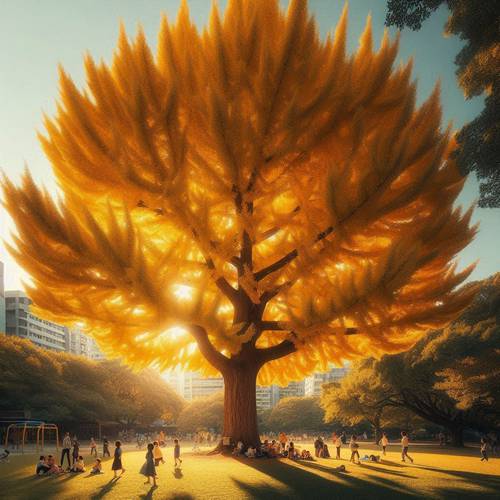Origins and Fossil Records
The history of Ginkgo biloba tree stretches back millions of years, making it one of the oldest tree species on Earth. This ancient relic has been around since the Jurassic Period, a time when dinosaurs roamed the planet. Fossil records reveal that Ginkgo tree, with its distinctive fan-shaped leaves, thrived in diverse ecosystems across the globe.
In fact, it's been nicknamed a "living fossil" because its basic structure hasn't changed significantly in millions of years. This incredible longevity is a testament to the tree's adaptability and resilience, allowing it to endure countless changes and survive to the present day.
In fact, it's been nicknamed a "living fossil" because its basic structure hasn't changed significantly in millions of years. This incredible longevity is a testament to the tree's adaptability and resilience, allowing it to endure countless changes and survive to the present day.
Survival Through the Ages
Ginkgo has weathered countless storms – literally. While its ancestors flourished alongside dinosaurs, it somehow managed to survive two mass extinction events, including the one that wiped out the dinosaurs. This incredible resilience is a testament to the species' adaptable nature and ability to thrive in various climates.
Today, Ginkgo tree is found in parts of Asia, often growing near temples and sacred sites. This connection to human history and culture reinforces its unique status as a symbol of strength, longevity, and even resilience in the face of adversity.
Today, Ginkgo tree is found in parts of Asia, often growing near temples and sacred sites. This connection to human history and culture reinforces its unique status as a symbol of strength, longevity, and even resilience in the face of adversity.
Cultural Significance in Asia
For centuries, Ginkgo biloba has held a special place in Asian culture, revered not just for its unique appearance but also for its medicinal properties. It's been used in traditional Chinese medicine for thousands of years, with its leaves believed to enhance memory, improve circulation, and even protect against dementia.
This powerful history, combined with its captivating appearance, has made Ginkgo biloba a beloved symbol throughout the region. It represents wisdom, longevity, and the interconnectedness of nature and human life. And just like the tree itself, the cultural significance of Ginkgo biloba continues to grow and evolve, inspiring awe and wonder in generations to come.
This powerful history, combined with its captivating appearance, has made Ginkgo biloba a beloved symbol throughout the region. It represents wisdom, longevity, and the interconnectedness of nature and human life. And just like the tree itself, the cultural significance of Ginkgo biloba continues to grow and evolve, inspiring awe and wonder in generations to come.



